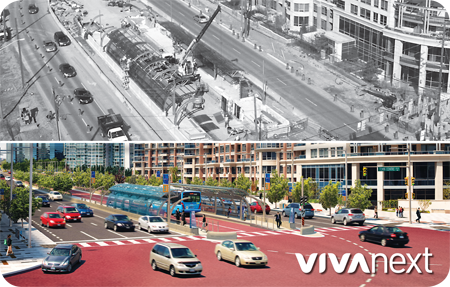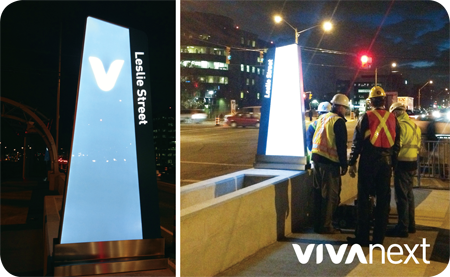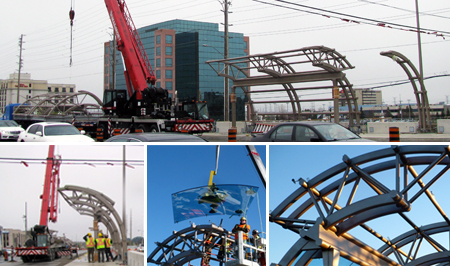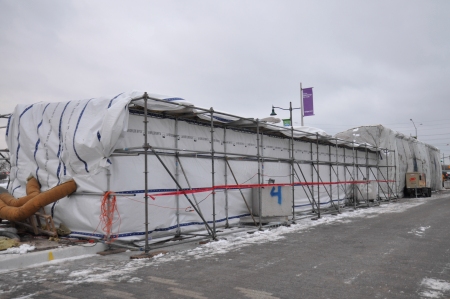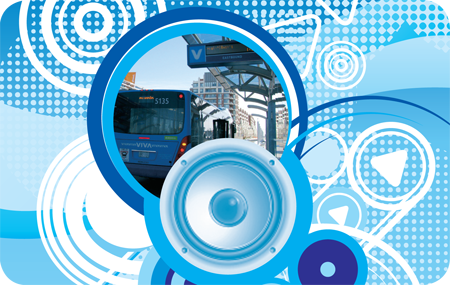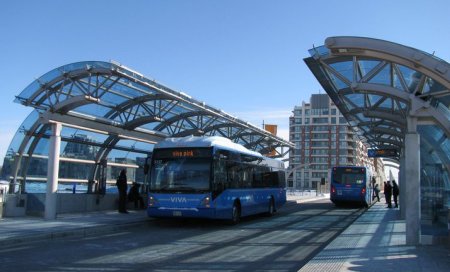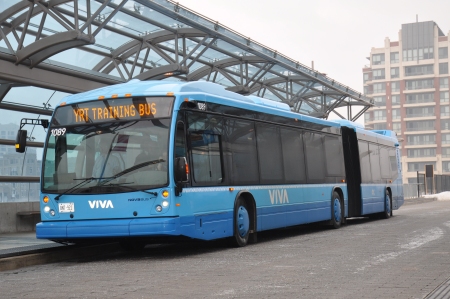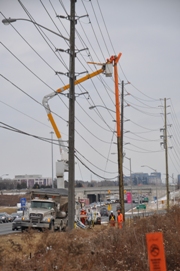If you’ve ever been involved in a home renovation project then you know it’s far easier to work in a room that is empty or unused, rather than the high traffic rooms, like a kitchen or bathroom. It’s one of the biggest challenges vivaNext faces during the rapidway construction – how to work in a confined, busy space that’s open for business 24/7.
Building a roadway is a process that follows clearly defined steps and uses modern technology, equipment and materials. In York Region, we are fortunate to have access to some of the best, most experienced construction contractors anywhere, so building the rapidways is – in some ways – a very straightforward project. Straightforward, that is, until you realize that the rapidways are being built down the middle of some of the Region’s busiest roads. So during construction, it’s critical to minimize the impact on people using the roadway by keeping travel lanes open during construction whenever possible. This is where “construction staging” – the process of doing the work in specific phases or steps to manage within the available space and right-of-way [ROW] or easement comes in.
Construction needs to happen in its own separate space; excavators need to swing their buckets, concrete trucks need to make deliveries, and construction trucks need room to back up. For this reason, the first step in rebuilding one of these busy roads is to create some extra room for construction crews to work safely. The best approach to do this is to take out the median, narrow each of the lanes and shift them over by repainting the lines. This way crews can work in the extra space that’s been freed up, before moving to the next.
Think of our kitchen example – it’s like putting down a new floor – you do one side, and then move your fridge and stove over to the completed side so you can do the other half. Once one section of construction is done, lanes are repainted again to shift them back, and begin work on the other side, working in stages along the entire segment.
To help manage the work areas, the Region also takes temporary and/or permanent easements or ROW’s on properties that are within York Region Rapid Transit’s construction limits. This ensures that when it’s time for a certain stage of construction the area is clear and available, permitting crews access during construction at any time. Easement areas include boulevards, sidewalks, driveways and parking lots fronting the rapidway construction. Rest assured, during construction, the vivaNext teams are committed to minimizing disruption, maintaining driveway access and keeping a sidewalk open at all times.
Sometimes you may even get the feeling that we’ve returned to an area even though it seemed like we were finished. It’s not déjà vu, what you’re actually seeing is our staging technique, where work is done in small, careful steps.
And just as you wouldn’t be able to live without your kitchen while you renovate, we will keep the roads open during construction, relying on staging to minimize the impact of work in order to finish as quickly as possible. We thank you for your patience and hope you are following along as this amazing transformation unfolds.

